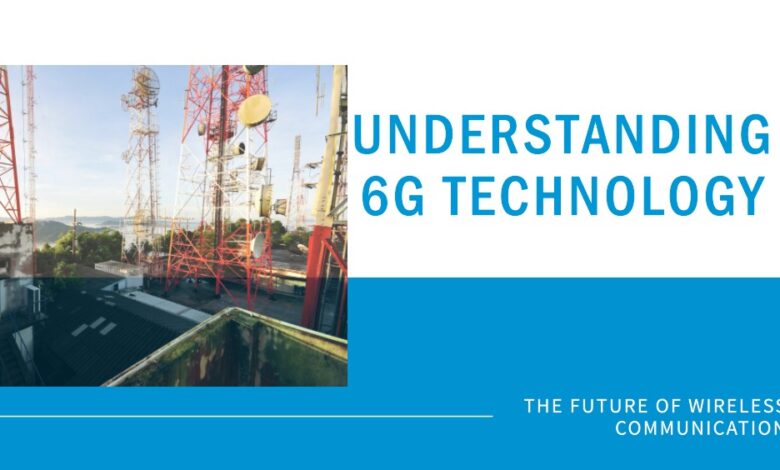What Is 6G and How Does It Compare With 5G?

Welcome to the future of wireless technology! As we step into a new era, we’re going to explore the exciting world of 6G, the sixth generation of wireless technology. This technology is still in its infancy, but it promises to revolutionize our lives in ways we can’t even imagine yet. In this article, we’ll compare 6G with 5G, the current standard, to help you understand the leaps we’re about to make. So, buckle up and get ready for a journey into the future of connectivity!
What Is 6G?
6G, or the sixth generation of wireless technology, is the successor to 5G and it’s set to take connectivity to a whole new level. Although 6G is still in the research and development phase, experts predict that it could be rolled out as early as 2030.
What makes 6G so exciting? It’s all about speed, capacity, and connectivity. 6G is expected to offer ultra-fast speeds, surpassing those of 5G. It’s also designed to support a massive number of connected devices, making it ideal for the Internet of Things (IoT).
But that’s not all. 6G could also bring about significant improvements in areas like AI integration, holographic communications, and high-precision manufacturing. These advancements could open up a world of possibilities, from smart cities to advanced healthcare applications.
Compare 5G and 6G
Before we delve into the comparison, let’s quickly recap what 5G is all about. 5G, or the fifth generation of wireless technology, is currently the fastest and most advanced technology available. It offers high-speed internet, lower latency, and the ability to connect a multitude of devices simultaneously.
Now, let’s see how 6G stacks up against 5G:
- Speed and Latency: 6G is expected to offer speeds that are significantly higher than 5G. While 5G can offer speeds up to 10 Gbps, 6G could potentially reach speeds of 100 Gbps or more. Additionally, 6G aims to reduce latency further, offering near-instantaneous data transfer.
- Frequency Bands: While 5G operates in the frequency bands up to 100 GHz, 6G is expected to utilize even higher frequency bands. This could potentially lead to faster data rates and increased capacity.
- Coverage and Reliability: 6G aims to provide universal coverage, overcoming the limitations of 5G. It also strives for higher reliability, ensuring consistent and uninterrupted connectivity.
- Number of Connected Devices: With the rise of the Internet of Things (IoT), the number of connected devices is increasing rapidly. 6G is designed to support this growth, allowing for a massive number of devices to be connected simultaneously.
Potential Applications of 6G:
Imagine a world where you can attend a meeting in New York, an opera in Sydney, and a wedding in Paris, all from the comfort of your living room. With 6G, this could become a reality. Here are some potential applications of 6G:
- Holographic Communications: 6G could make holographic communications a reality. This means you could interact with people and objects in a three-dimensional virtual space, making remote communications feel as real as being there in person.
- Artificial Intelligence: 6G could provide the infrastructure needed for more advanced AI applications. This could range from smarter personal assistants to more efficient manufacturing processes.
- High Precision Manufacturing: With 6G, factories could operate with unprecedented precision and efficiency. This could lead to higher quality products and lower costs.
- Internet of Things (IoT): 6G could take the IoT to the next level. Imagine a world where everything from your fridge to your car is connected and can communicate with each other.
Challenges and Future Directions:
Like any emerging technology, 6G also comes with its own set of challenges. The higher frequency bands that 6G aims to use can offer faster data rates and increased capacity, but they also have their drawbacks. For instance, signals at these frequencies don’t travel as far and are more easily blocked by obstacles, which could pose challenges for coverage.
Moreover, the development and deployment of 6G would require significant investment in infrastructure. This includes not only the cost of developing the technology itself but also the cost of updating existing networks and devices to be compatible with 6G.
Despite these challenges, the future of wireless communication looks promising. With ongoing research and development, we can expect to overcome these hurdles and fully realize the potential of 6G. Beyond 6G, who knows what the future holds? One thing is for sure: the evolution of wireless technology is far from over.
How Will 6G Look?
6G architecture promises ultra-high speed and power, enticing users with robust and resilient networks. It focuses on overcoming current network limitations, improving design, and optimizing connectivity through advanced AI systems and powerful edge computing for seamless internet connectivity.
Key Components:
- Ultra-High Speed: Offering lightning-speed connectivity.
- Advanced AI Systems: Coordinating complex systems efficiently.
- Powerful Edge Computing: Enhancing network capabilities.
Who’s Working on 6G?
1. University of Aveiro:
- Released a 2019 whitepaper, “Why 6G?”, discussing driving forces, features, and key technologies.
2. Samsung:
- Started 6G research in June 2019.
3. SK Telecom:
- Signed agreements with Ericsson, Samsung, and Nokia for joint 6G research and development.
4. TeraView:
- Received £191 million in funding from the Sustainable Innovation Fund in the UK.
- Focuses on using its expertise to accelerate 6G development.
5. Google and Apple:
- Expressed interest in 6G research.
- Joined the Next G Alliance in October 2020 to create a 6G roadmap.
6. LG Electronics:
- Established a research center for 6G technology.
- Focuses on global standardization, R&D, and creating new business opportunities.
Conclusion
We’ve taken a deep dive into the world of 6G, the next generation of wireless technology. We’ve explored how it compares to the current standard, 5G, and looked at some of the exciting advancements we can expect with 6G, from holographic communications to advanced AI applications. We’ve also discussed the challenges that come with implementing this new technology and speculated on what the future might hold.
While 6G is still in the research and development phase, it promises to revolutionize our lives in ways we can’t even imagine yet. As we stand on the brink of this new era, one thing is clear: the future of wireless technology is bright, and we can’t wait to see what it brings!






